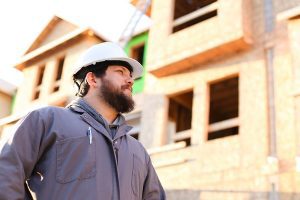Over the past decade, major storms have become more catastrophic. Hurricanes, tornados, and severe thunderstorms have grown more powerful, putting the homes you build and your buyers in more peril. One of the biggest culprits is wind damage. Let’s look at why it’s important for you to protect your window openings from wind damage, along with some ways to do so.
Pre-Emptive Wind Protection
In some places, pre-emptive wind protection is a necessity. In hurricane-prone areas like the Southeast, the International Building Code (IBC) and International Residential Code (IRC) require builders in “Wind Bourne Debris Regions” to make their window openings stronger to protect against hurricane-force winds.
But even if you don’t build in hurricane-prone areas, strengthening window openings is a worthwhile investment.
Why Invest in Strong Windows?
In extreme weather, windows are often a weak point. Flying debris and hail can easily destroy windows. Once weather’s breached the windows, it can cause tons of structural problems. Flooding, mold, foundation damage, and soil movement can all stem from weather that causes broken windows.
Additionally, storms that cause wind damage can pressurize the interior of the home. Increased pressure can cause homes to collapse in on themselves, leading to total loss and even death.
In short, pre-emptively protecting your windows against wind damage is good for your buyers, your company, and your reputation.
How You Can Protect Windows Against Wind Damage
There are several proven ways for you to protect windows from wind damage.
Precut wooden structural panels
The most common, least expensive option is to provide precut wooden structural panels for your buyers. This lets them “board up” their windows to protect against wind damage. Though it’s less expensive, it usually requires your buyers to install them when needed, since such installation services tend to be in short supply when a storm is brewing.
Another downside to precut panels is that buyers may not know how to install them. Additionally, since some coastal homes are second homes for owners, they may not be able to get to them to install the panels.
However, the upside to precut panels is that they can save the window from destruction, provided it’s installed properly and the storm isn’t too strong.
You Build it, We'll back you up.
Learn why so many builders enroll their homes in the 2-10 New Home Warranty Program.
Impact-resistant windows
Impact-resistant windows are good for protecting the window opening itself. They’re more likely to withstand projectiles and fluctuations in pressure, which can protect the whole house’s structure.
There are some downsides to this solution. Generally, impact-resistant windows will shatter in high-force winds. That means that your buyers may need to replace them after a major storm. And they’re more expensive than precut plywood.
However, impact-resistant windows have many upsides.
The benefits of impact-resistant windows
First, although the glass itself may shatter or be punctured by projectiles, impact-resistant windows are designed to catch the shattered glass. That means less shrapnel.
Second, impact-resistant windows use a strong plastic center to keep the window glass in place. This plastic generally stays intact during and after a strong storm, which protects the structure of the window opening. Unlike plywood—which may be totally destroyed along with the window in strong storms—this plastic center tends to survive.
Finally, impact-resistant windows often lead to lower energy costs for your buyers. Since they’re designed to keep storm elements out, they also tend to prevent allergens from entering the home, as well as reducing heat loss.

Let 2-10 Back Up the Structure of Your Homes
Wind damage is a problem that’s here to stay for the foreseeable future. While a 2-10 Home Buyers Warranty (2-10) New Home Warranty won’t protect against weather damage, it can help you protect the homes you build against common structural issues.
For example, did you know that most structural defects are caused by soil movement? When you have a 2-10 New Home Warranty, you get protection against structural defects caused by soil movement.
Additionally, we provide you and your buyers with written construction standards for workmanship, distribution systems, and the home’s structure. That helps you build trust with your buyers by showing them who’s responsible for what when it comes to defects.
Even better, a 2-10 New Home Warranty can give you access to 2-10 NewHome Care, which offers exceptional post-closing experiences to your clients.








